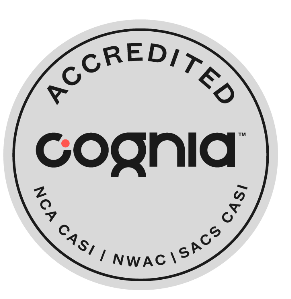Utah is no stranger to natural disasters, from the major wind storm three years ago, to the 5.7 magnitude earthquake in 2020.
In the aftermath of the Magna earthquake, a number of buildings across the Salt Lake valley were damaged and Canyons District’s facilities team immediately jumped into action, making sure the buildings within the District were safe.
“There were three of us at the time,” says Canyons Assistant Facilities Director, Ryan Jakeman, “We each went out and went through all of the schools to make sure they were structurally sound and that school could continue.”
Thankfully, none of the District’s buildings were damaged, in part, because the District — with the community’s support — has invested in seismically upgrading its buildings. “All of the buildings we have built as a school district, from the inception of Canyons, have been built to the most current code for earthquakes,” says Jakeman, “and all of our older buildings have been seismically upgraded.”
Every CSD school also participates in various drills for things like earthquakes, fires, and evacuations. Preparedness takes many forms and Canyons District schools strive to be ready for anything.
But families are wise to also take disaster preparedness into their own hands. The Wasatch Fault has a 43 percent change of experiencing a 6.75 or greater magnitude earthquake in the next 50 years, and experts project that such an event would be among the deadliest disasters in U.S. history, according to Envision Utah, a non-profit think tank and planning group.
“A major earthquake could leave entire neighborhoods without food, water, electricity and other basic needs, and families need to be prepared to sustain themselves until help arrives,” Jakeman said.
In Canyons District, the month of October has been devoted to safety, and in the realm of disaster preparedness it helps to remember three simple steps: The Federal Emergency Management Agency’s “Take Control in 1,2,3.”
Take Control:
- 1) Assess your needs
- 2) Make a plan
- 3) Engage your support network to stay safe when disaster strikes
Assess your needs
Do you have medication that needs to kept cool? Do you or someone in your family need mobility or assistive devices? What about your pet’s medications? Do you have a supply of water and non-perishable food on hand?
Make a plan
Once you’ve figured out those key needs, you can make a plan ahead of time. Build a 24-hour kit with those extra medications, a first aid kit, flash lights, extra chargers, things to keep children calm and entertained. You could also include recent photos and medication lists for family members in case you get separated. Make a plan for where you’re going to meet depending on the situation. Have documentation of medications and needs for each member of your family.
Engage your support network
Reach out to family, friends, and neighbors ahead of time to build up support for one another before, during, and after a disaster or emergency. Share your plan with your support network, especially if they live in an area which may not be impacted by the same event.
Make sure someone else has a key to your home and knows where you keep your emergency supplies.
Practice your plan with your kids, make sure they know where to go and what to do for different kinds of disasters.
For more information on how to prepare your family for any kind of emergency, you can visit ready.gov.






